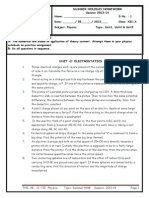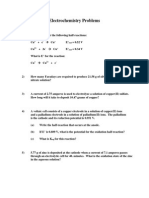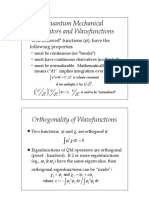0% found this document useful (0 votes)
240 views21 pagesPhysics Project: Cell Resistance Factors
Here are the observations for studying the variation of internal resistance with distance between electrodes:
S.No Ammeter Reading (A) Position of Null Point (cm) Shunt Resistance R(Ω) Internal Resistance r(Ω)
With R Without R (Ω) (Ω)
(l1) (l2)
1 0.3 660.5 35.5 1
2 0.3 660.5 77.2 2
3 0.3 660.5 108.3 3
PHYSICS PROJECT 15
FILE
OBSERVATION
Uploaded by
Tanay MauryaCopyright
© © All Rights Reserved
We take content rights seriously. If you suspect this is your content, claim it here.
Available Formats
Download as DOCX, PDF, TXT or read online on Scribd
0% found this document useful (0 votes)
240 views21 pagesPhysics Project: Cell Resistance Factors
Here are the observations for studying the variation of internal resistance with distance between electrodes:
S.No Ammeter Reading (A) Position of Null Point (cm) Shunt Resistance R(Ω) Internal Resistance r(Ω)
With R Without R (Ω) (Ω)
(l1) (l2)
1 0.3 660.5 35.5 1
2 0.3 660.5 77.2 2
3 0.3 660.5 108.3 3
PHYSICS PROJECT 15
FILE
OBSERVATION
Uploaded by
Tanay MauryaCopyright
© © All Rights Reserved
We take content rights seriously. If you suspect this is your content, claim it here.
Available Formats
Download as DOCX, PDF, TXT or read online on Scribd
/ 21

























































































